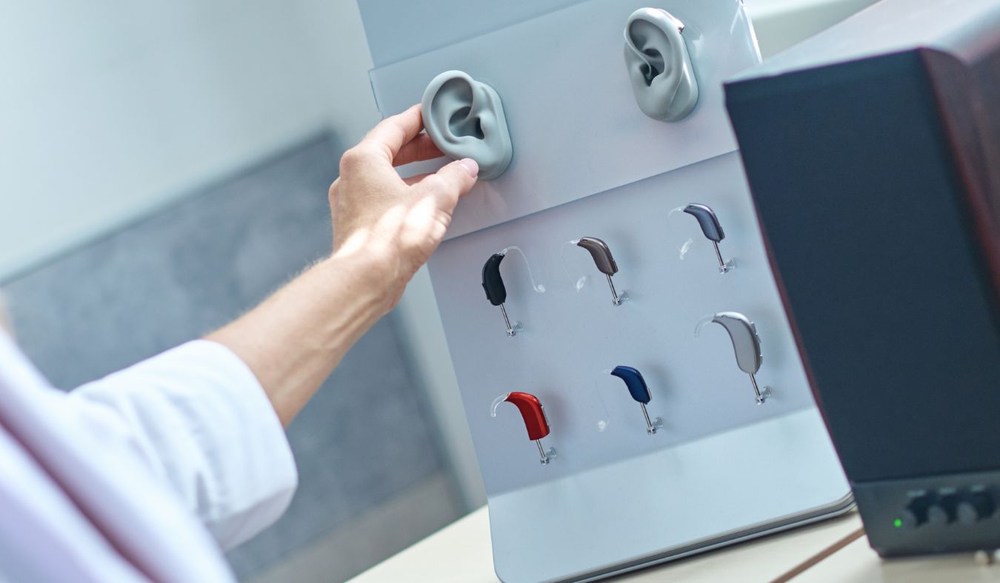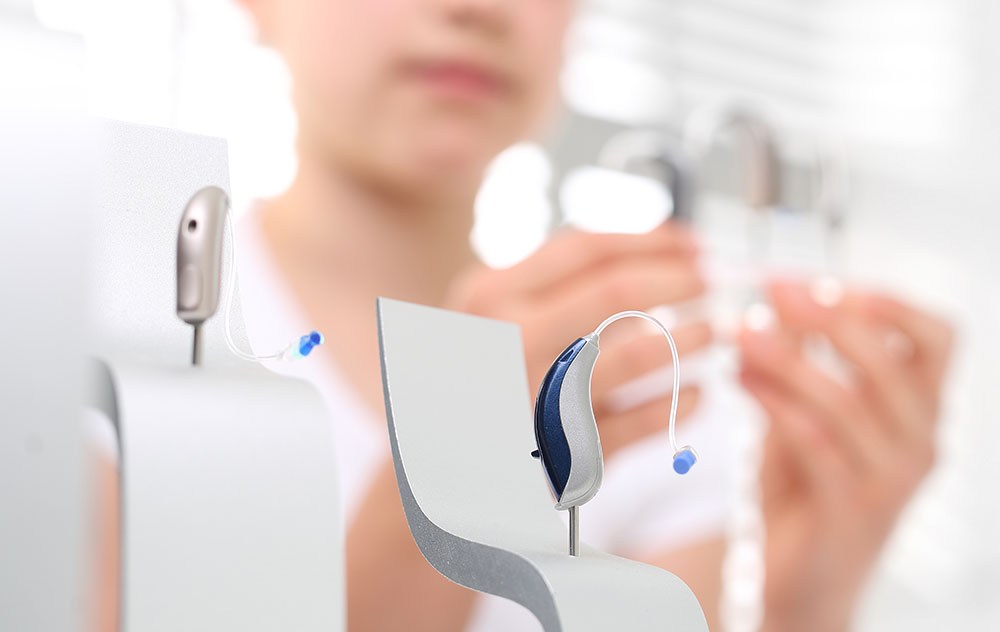Hearing Aid Innovations: What’s New in 2025?
Hearing aid technology has advanced significantly in recent years, and

By: admin | March 26, 2024
3D-printed hearing aids are poised to revolutionise the hearing health landscape. This groundbreaking technology offers a level of personalisation never seen before, allowing hearing aids to be meticulously tailored to your specific needs. Given that each person’s ear shape and size is unique, moving away from a generic approach can significantly improve both comfort and performance.
When we examine the fusion of 3D-printing and hearing health, we uncover some truly extraordinary possibilities. Custom-made devices can improve sound quality by fitting snugly in the ear canal, thus reducing feedback noise that often troubles standard models. Also, their enhanced durability – a byproduct of precise construction and careful material selection – is a game-changer in the quest for optimal hearing solutions.
Have you ever thought about how 3D printing could dramatically alter the healthcare sector, especially when it comes to hearing health?
The secret lies in the accuracy this technology provides. By creating exact replicas of your ear anatomy, 3D printing allows the production of customised hearing aids that perfectly fit each person’s unique ear shape and size. This not only increases comfort but also optimises sound quality by minimising feedback noise – a common problem with standard models.
Additionally, 3D printing could potentially lead to significant cost reductions. As it removes the need for multiple fittings and adjustments typically associated with traditional hearing aids, you may save both time and money in your quest for better hearing health. Indeed, 3D printing is leading the way in a new era of personalised healthcare solutions.
The marriage of 3D printing and hearing health is nothing short of a technological wonder. This unique blend presents a plethora of opportunities in personalised hearing solutions.
Think about this – with 3D printing, your hearing instrument specialist can now create a device that mirrors your ear anatomy perfectly. The result? A custom-fit hearing aid that not only sits comfortably in your ear but also significantly reduces annoying feedback noise. It’s a double victory, enhancing both your comfort and sound quality. Plus, the precise construction technique means these aids are built to last! So, when it comes to merging 3D printing with hearing health, it’s safe to say – the future sounds bright!
Traditional modern hearing aids operate on a simple yet sophisticated principle to amplify sounds and improve auditory perception for individuals with hearing loss. These devices consist of several key components that work in tandem to process incoming sound signals and deliver them effectively to the wearer’s ear.
Firstly, a microphone positioned on the hearing aid’s exterior captures environmental sounds and converts them into electrical signals. These signals are then processed by a small microchip within the device, where sophisticated algorithms analyze and adjust the sound according to the wearer’s specific hearing needs. This customization ensures that amplified sounds are optimized for clarity and comfort.
Once the sound signals have been processed, they are transmitted to a miniature speaker or receiver located within the hearing aid. The receiver converts the electrical signals back into audible sound waves, which are then delivered directly into the wearer’s ear canal. By amplifying specific frequencies or adjusting volume levels as needed, the hearing aid enhances the wearer’s ability to perceive and understand speech, environmental sounds and other auditory stimuli.
Additionally, traditional hearing aids may feature various advanced features and settings to further optimize the listening experience. These may include directional microphones, which focus on sounds in front of the wearer while reducing background noise, as well as feedback suppression algorithms to minimize whistling or squealing sounds.
Moving from standard to personalised hearing devices is like swapping a one-size-fits-all hat for a tailor-made one. It’s the difference between settling for a good fit and achieving the perfect fit.
In the realm of hearing health, this shift promises enhanced comfort and sound quality. Personalised devices, tailored to your unique ear anatomy, are set to replace generic models – much like opting for a bespoke suit over an off-the-rack ensemble. This marks a significant stride towards more effective and efficient hearing solutions.
Let’s take a look at how 3D-printed hearing aids are made. This process begins with a digital scan of your ear, creating an exact 3D model. The design is then sent to a 3D printer which constructs the hearing aid layer by layer from durable materials. This personalised approach ensures a perfect fit and optimal sound quality, bringing you closer to seamless hearing health solutions.
As we continue our discussion, it’s worth noting how precision plays a key role in enhancing sound quality. A 3D-printed hearing aid, meticulously crafted to match your unique ear anatomy, is designed to minimise feedback noise. This is a common issue with generic models that often don’t fit perfectly. With an impeccable fit provided by these personalised devices, the sound quality gets a significant boost.
The link between precision and enhanced sound quality is clear. It is this exactness that sets 3D-printed hearing aids apart from traditional models, offering you an improved hearing experience.
Let’s discuss feedback noise, a common issue faced by many hearing aid users. Customisation, facilitated by 3D printing technology, can be an effective solution to this problem. By crafting a device that is an exact match to your ear anatomy, feedback noise can be significantly reduced. This is because the snug fit prevents sound leakage that often causes this disruptive noise.
However, it’s important to note that while customisation solves the issue of feedback noise for many, it may not work for everyone. Some people might still experience occasional feedback due to factors like changes in ear shape over time or the buildup of earwax. It’s always best to consult with your hearing instrument specialist if you continue to experience persistent feedback noise even with a customised device.
Despite some potential drawbacks, the benefits of customisation are considerable. Alongside reducing feedback noise and enhancing sound quality, a custom-fit device also provides increased comfort and durability. With these advantages in mind, it becomes clear why more and more people are opting for personalised hearing aids made possible through 3D printing technology.
Moving forward, another aspect worth noting about 3D-printed hearing aids is their impressive durability and longevity. The precision involved in the 3D printing process results in a product that is not only customised to your ear but also robust.
These hearing aids are designed to withstand the rigours of daily use. The materials used in their construction are chosen for both comfort and resilience, ensuring that your device can serve you well over time.
In addition to providing a perfect fit and superior sound quality, 3D-printed hearing aids offer an extended lifespan compared to traditional models. This means less frequent replacements and potentially significant cost savings in the long run.
Switching to 3D-printed hearing aids is more than just a technological upgrade. It’s a step towards a more comfortable and efficient hearing experience. These personalised devices bring practical benefits that extend beyond improved sound quality and durability.
The precision of 3D printing allows for a seamless fit, reducing the need for multiple adjustments – saving you both time and money. Additionally, the enhanced comfort and reduced feedback noise contribute to an overall better quality of life. So, understanding the benefits of 3D-printed hearing aids is important as it can help you make an informed decision about your hearing health solutions.
While 3D-printed hearing aids promise a world of benefits, there may be potential challenges to consider. As with any new technology, it’s important to be aware of these possible hurdles before making the switch.
One such hurdle could be the initial cost. Although 3D-printed hearing aids can potentially save money in the long run due to their durability and reduced need for adjustments, the upfront cost might be higher than traditional models. However, it’s essential to weigh this against the numerous advantages these personalised devices offer.
Another potential challenge could lie in accessibility. Not all hearing health clinics may have adopted this advanced technology yet. Hence, finding a specialist who offers 3D-printed hearing aids might take some research and effort on your part. But overcoming these hurdles can lead you towards an enhanced hearing experience with customised solutions tailored just for you.
Making the switch from traditional to 3D-printed hearing aids can feel like a big step. But rest assured, it’s a change that promises to bring significant improvements to your hearing health experience.
Firstly, consider the comfort factor. A 3D-printed hearing aid is designed specifically for your unique ear shape and size. This means it fits perfectly in your ear, reducing discomfort and enhancing sound quality. Additionally, think about the durability of these devices. The materials used in 3D printing are robust and resilient, promising a longer lifespan for your hearing aid. However, be mindful of potential challenges like higher initial costs or finding a clinic that offers this technology. Despite these hurdles, transitioning to 3D-printed hearing aids can lead to an improved quality of life with better fitting and longer lasting devices.
As we continue our discussion on the evolution of hearing aids, let’s turn our attention to the latest advancement in this field – 3D-printed hearing aids. This technology is redefining the future of hearing health by offering a new level of personalisation and precision.
With 3D printing, hearing aids can now be tailored exactly to an individual’s unique ear anatomy. This not only enhances comfort but also improves sound quality by reducing feedback noise. These custom-made devices are more durable and potentially more cost-effective in the long run. Here are some key implications of this technology:
For those located in Bowmanville, ON, please contact us at (289) 319-0688 for more information or to schedule a consultation. We’re here to help guide you through these exciting advancements in the field of hearing health care.
Tags: benefits of hearing aids, hearing aid basics, hearing aid repair

Hearing aid technology has advanced significantly in recent years, and
By: admin | November 17, 2025

If you rely on hearing aids for clear communication at home and work,
By: admin | September 24, 2025

As we become more aware of our environmental impact, many of us are
By: admin | May 23, 2025
